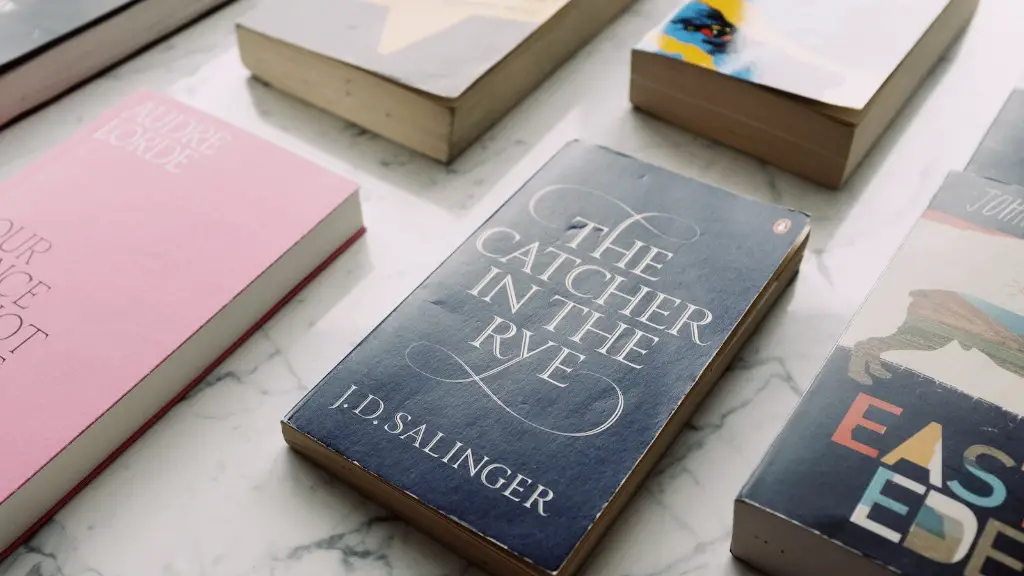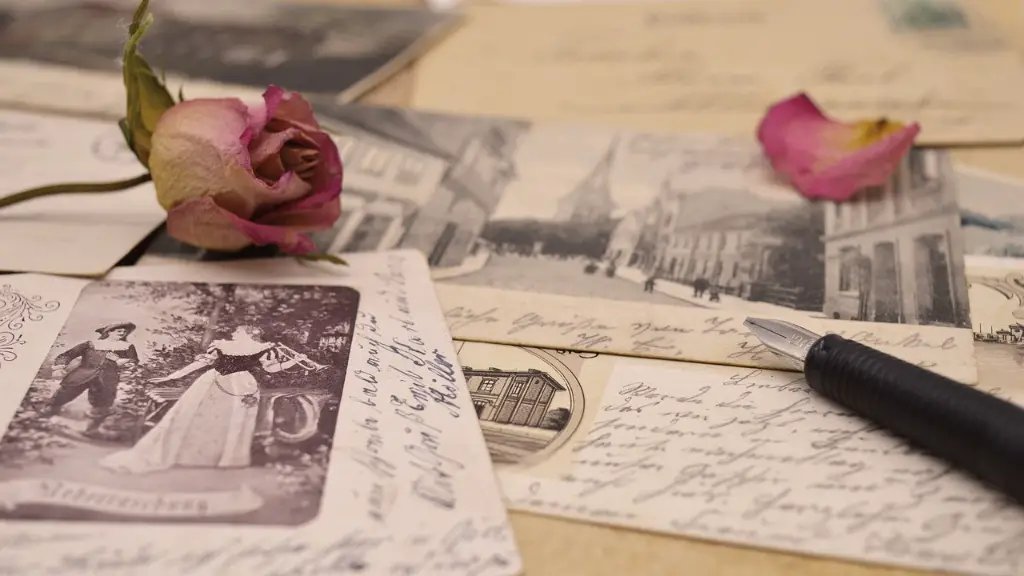Experts say that poetry is beautiful because poets find unique and novel ways of expressing their emotions and sentiments. Their words could come from a place deep within their hearts, and it often has an impact on the readers that is incomparable to other forms of art. Poetry is an unrivaled form of self-expression, often revealing thoughts and feelings that are buried in the depths of a poet’s soul.
Many experts agree that truth lies at the very core of poetry, and that it is this element that makes it so alluring. The truth might not be something that the reader is expecting, but it is often unexpected beauty that draws us in. Poets are able to evoke images, feelings, and ideas out of thin air, and this power makes them incredibly special.
The beauty of poetry is something that has attracted people worldwide, regardless of language, culture, or background. It transcends the mundane fabric of everyday life, giving us visions of the sublime, the ideal, and the spiritual. For example, a poem about a sunset might capture the wonder of that moment, bringing alive the beauty and the grandeur of Nature in ways that words alone could never do.
Poets have an ability to find beauty in the most unexpected of places, and this is perhaps one of the biggest draws of poetry. Poets are able to take the mundane and give it life and depth, connecting us to the beauty that already exists around us. They oftentimes make us slow down and see the world anew, our senses alive to the beauty of Nature.
Language is also a fundamental part of poetry, and poets use words to create vivid scenes and powerful images. Choosing words precise and precise in order to reach into our deepest consciousness and awaken us. Poets often use imagery, metaphor, and symbolism to give beauty and depth to their words, and this can take us on a journey of emotional and spiritual discovery.
Perhaps the greatest reason why poetry is so beautiful is because of the powerful emotional and spiritual connections it can create. Poetry can touch something deep inside us, something that we are often too afraid to look at or express in other ways. It can speak to our innermost thoughts and feelings in ways no other art form can.
In essence, what makes poetry beautiful is the way it can transport us, ways no other art form could, plumbing the depths of our hearts and minds. It is this ability to evoke emotion and thought, to stir our senses and make us dream, that make it so beautiful and timeless.
The Healing Power Of Poetry
The healing power of poetry is an often overlooked strength of the art form. It can provide relief from depression, anxiety, and trauma, contouring itself to the needs of the individual. By working through difficult emotions and allowing them to be expressed in an environment of safety, poetry can prove to be an effective tool to help cope with difficult topics.
Poetry also offers healing through allowing us to honour our pain and our joy, validating the range of emotions we experience. Through its evocative language, poetry can lighten the darkness and offer a softness to our suffering. It can act as a bridge to self-expression, and provide catharsis for those trapped in silence.
Writing poetry can also be a powerful way to access our creativity and use it as a tool for healing. Our words can manifest our innermost experiences and can bring clarity, understanding and purpose. Poetry opens a portal that makes the inexpressible expressible, giving shape and form to our shadows, griefs and pains.
In the depths of despair, poetry can act as a lifeline, offering to its reader comfort and respite. Poetry gives us permission to explore our darkness, our joy, and all within it. By journeying through our struggles and our triumphs, we can gain insight into our experiences and bring greater clarity, insight, and compassion for ourselves and for others.
The Power Of Poetic Language
The power of poetic language is difficult to measure, as each poem has its own context, message, and impact. It can be used to describe our physical and emotional realities, offering a sense of solace and understanding to its readers. Through enjambment and assonance, poets create beauty with their chosen words.
Sound plays an important part in this, as the rhythm of words, starting with a beat and a pause, entice us further into the poem. Music sets the stage, creating a backdrop against which the narrative is revealed. It is through this interplay between lush sounds and verse that poems bring to life stories that may otherwise be untold.
Word choice also contributes to the power of poetic language. Each word chosen carefully to convey the desired emotion and meaning. Some words, these can appear simple yet evoke deep emotion and powerful understanding. Everything is interconnected and so carries a great weight, and poets use these subtleties to bring the words to life.
Poets shape language and use it to unlock hidden feelings and emotions. Through their words, they can capture the splendour and despair of life. Poets are masters of emotional manipulation, and their command of words can bring us to tears and laughter in euphoria.
The Role Of Metaphor In Poetry
Metaphor is widely regarded as one of the most powerful tools of the poet, allowing them to communicate complex ideas in a succinct and elegant way. Through metaphor, the reader and poet can create a shared understanding, often providing insights that cannot be expressed through literal language.
For example, a poet may use the metaphor of light to express comfort and hope, associating it with the dawning of a new day. Such a metaphor offers the potential for the reader to take a step back from their own life and observe the world in a different light. By drawing connections between seemingly unconnected objects, metaphors can offer new perspectives and possibilities.
Metaphors can also help the poet to convey emotion, allowing the reader to feel each emotion and attachment experienced by the poet while they wrote. This makes the poem much more powerful and memorable, as it allows the reader to become fully immersed in the journey taken by the poet while they were writing.
Metaphors can create a bridge between the unfamiliar and the familiar, allowing us to gain a better understanding of ourselves and of those around us. Through its use of allegory, it can expand on existing ideas and concepts, broadening our horizons and taking us on an exploration of life and of our own feelings.
Focus On Imagery In Poetry
Imagery is often used to bring the poem to life and offer the reader more of an insight into its contents. By creating images in the minds of its readers, a poem can reveal feelings, emotions and realities in ways that words alone cannot do.
Imagery allows the reader to put themselves into the poem, allowing them to understand events and experiences of the poet on a deeper level. At the same time, it brings to life ideas and concepts, making them real and tangible in the minds of its readers.
Imagery can be used to explain difficult topics or represent the unseen, crafting unique worlds and forging new paths. It can also be employed to paint vivid portraits of scenes and characters, taking us on an exploration of their inner thoughts and feelings.
Imagery has the power to evoke strong emotions and reactions from its readers, offering an unparalleled connection between reader and poet. It can make the unfamiliar familiar, drawing from the reader’s existing knowledge and experiences, and allows readers to relate to the poem on a deeper level.
The Role Of Form In Poetry
The form of a poem is often the first thing a reader takes notice of, as it can provide structure and an indication of what the poem will likely contain. Whether rhyming or free verse, the form of a poem directs the flow of the poem and can lead the reader to pre-determined conclusions.
That said, form itself isn’t always a limitation. Rhyming and free verse can be used to create completely unique works, depending on the poet’s approach and vision. For example, comparison, juxtaposition and assonance can be used to create a unique style and texture, allowing the poem to enter the subconscious of its readers.
Form can also be a metaphor in itself, representing ideas and concepts that the poet wishes to convey. By drawing attention to certain patterns, structures, or even spaces in a poem, the poet can lead the reader to a certain thought or feeling, or even to a different interpretation.
Overall, form can be used to create something beautiful and unique, merging the poet’s vision with their words to create a lasting impression in the minds of its readers. It allows for the telling of stories that might otherwise remain untold, and for emotions and feelings to be explored in new and creative ways.





